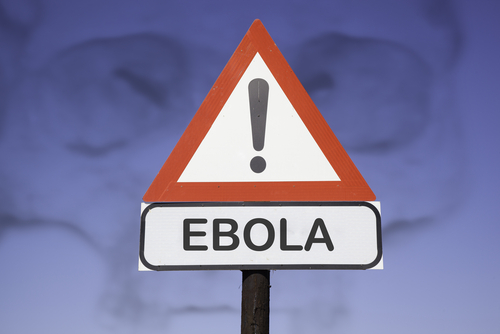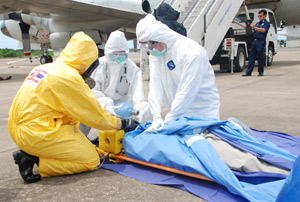The recent outbreak of the Ebola Virus Disease has made it a household name. Most all have heard about it and as with epidemic diseases, there is a lot of fear psychosis around it which leads to a lot of misinformation. Let's understand some facts surrounding this deadly disease.
The Fact File
1. Ebola Virus Disease (previously called Ebola Hemorrhagic Fever) is caused by the Ebola virus.
2. This disease was first identified in 1976 in a village in Zaire (presently Democratic Republic of Congo).
3. There have been 33 outbreaks of Ebola since 1976.
(* Data as on November 30th 2014 - report published by CNN)
4. The recent outbreak has been the largest so far and it is for the first time that the disease has crossed its rural barriers to infect people in the urban areas.
5.The African countries of Guinea (2164* cases), Liberia (7365* cases) and Sierra Leone (7312* cases) are the worst affected areas in this outbreak.
Symptoms to Look For
Once the virus enters the body, it takes from 2 to 21 days for initial symptoms to occur. These may be absolutely non-specific, like those seen in flu or similar conditions,and include:
i)Fever
ii) Muscular Pain
iii) Headache
iv) Sore Throat
v) Diarrhea
vi) Abdominal Cramps
vii)Vomiting
Later, hemorrhagic symptoms like bleeding from the mouth or nose appear. Also seen are symptoms like rash, impaired kidney and liver function and blood in stool. The virus overwhelms the immune system and causes severe dehydration, leading to low blood pressure.
How can you get Ebola?
Ebola virus spreads through bodily fluids from infected persons. It cannot spread through air and needs direct contact for transmission. Here are a few ways in which you can catch the disease:
Did You Know?
1. Ebola virus is named after a Congolese river by the same name.
2. The genus Ebolavirus has 5 species (of which 4 are known to cause the disease in humans).
3. Ebola virus is transmitted to humans from animals.
4. The mammals known to transmit this virus are African fruit bats, gorillas, monkeys, porcupine, forest
1. Body Fluids: A person will contract Ebola only if he/she comes in direct contact with fluids like blood, stool, vomit, urine, sweat, tears and breast milk of a symptomatic person. These fluids need to get inside the body through openings like mouth, eyes, nose, genitalia or broken skin for the person to contract the disease.
2. Physical Intimacy: You can catch Ebola by having sex or by kissing an infected person.
3. Infected Objects: Using objects that have used earlier by Ebola patients can transmit the disease.
4. Contact with Infected Animals: Ebola can be transmitted to humans by consumption of infected meat. It can also be contracted if one comes in direct contact with urine, saliva or other bodily fluids of such animals.
Ebola Treatment
There is no known cure for the disease. Current treatment options are either experimental or symptomatic. An infected person loses body fluids rapidly and hence has to be continuously hydrated through IV. His blood pressure needs to be maintained and has to be treated for any secondary infections.

Experimental drugs like Brincidofovir, Favipiravir and TKM-Ebola and a monoclonal antibody preparation called ZMapp are undergoing human trials as they have shown promise during animal testing. Two vaccines have been developed and they could be made available only after human trials are performed for their safety and efficacy.
Finally, as is the case with all diseases, the survival of the person depends on how his immune system responds to the pathogenic agent and how soon he is able to get medical attention. It is also imperative to segregate the sick from the healthy. Ebola is another example of our insignificance in the eyes of the forces of Nature, wherein an organism as simple as a virus can play havoc with our body and could not care less about it.
Good to Know
Ebola virus can be killed by using bleaching powder or other strong disinfectants.